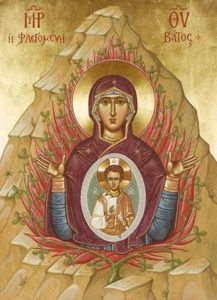The two halves of life

Ancient doors at Chaco Canyon, New Mexico
Built by the Ancestral Puebloans (AD 900-1150)
This stunning picture hangs on the wall of a room in my house. Every time I walk into the room it reminds me that life keeps bringing me to new doors into new rooms, new challenges, and new possibilities.
The picture hangs in the room where I meet with friends who come to talk about their spiritual journeys. When someone is sitting in the armchair beneath the picture, I can often hear God calling them to cross the threshold into the next part their life.
Richard Rohr says that there are two halves of our life. In the first half, we all live in rooms built by our families, our cultures, our faith communities. If we’re lucky, we’re happy in this room – it’s where our parents feed us, and teach us, and love us, and help us to grow. If we’re not so lucky – if our childhood is not so happy – we still find it hard to leave that familiar room. That’s because the room still represents order and certainty, even if it has cramped our souls. If we walk through the door, we’ll be leaving what we have always known.
But there comes a time when God invites each of us walk through the door into a new chapter for our lives. And so Rohr writes,
“In the first half of our lives, we have no container for spirituality’s awesome content, no wineskins prepared to hold such utterly intoxicating wine…
“The second half of life can hold some new wine, but that normally means the container has to stretch – die in its present form – or even replace itself with something better.
“Early-stage religion [the first room] is largely preparing us for the immense gift of this burning, this inner experience of God, as though creating a proper stable into which the Christ can be born. Unfortunately, most people get so preoccupied with their stable, and whether their stable is better than your stable, or whether their stable is the only “one, holy, catholic, and apostolic” stable, that they never get to the birth of God in the soul…
“You see, authentic God experience always ‘burns’ you, yet does not destroy you (see Exodus 3), just as the burning bush did to Moses…
“But most of us are not prepared for such burning, nor even told to expect it. By definition, authentic God experience is always ‘too much’. It consoles our True Self only after it has devastated our false self. “ (see Falling Upward, p. 13-14)

Virgin of the Burning Bush,
St. Catherine’s Monastery, Mt. Sinai
Years ago now, I had the privilege of making a pilgrimage to St. Catherine’s Monastery in the Sinai desert. The ancient church was filled with beautiful icons – and in a dark corner, I found an icon that touched my soul. It was an icon of the Virgin Mary, this time pregnant with the baby Jesus; the fire of Jesus’ presence burned within her and around her. That icon was a powerful symbol for me – of the One who dwells within us, the One who burns within us, and the One who calls us into an uncertain but awesome future.
Richard Rohr asks:
In what ways could Jesus’ command to ‘change your mind’ (see Mark 1:15) affect your personal journey? Spend time thinking about the difficult situations you are facing now, or the relationships in your life that are difficult now. How might they be challenging and inviting you to change your mind? (from the Companion Journal, p. 10

Much better than the term “conversion”. That implies that somehow the person must stop being who he/she is and become someone else. This offends some people. Leaving a childhood room to explore the rest of the house is a much better metaphor.